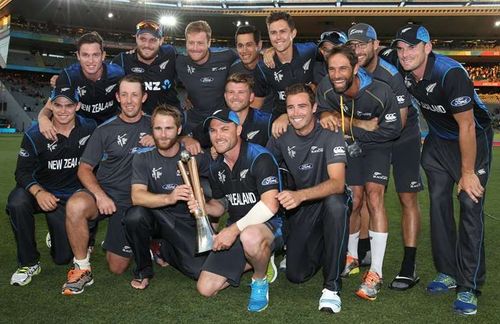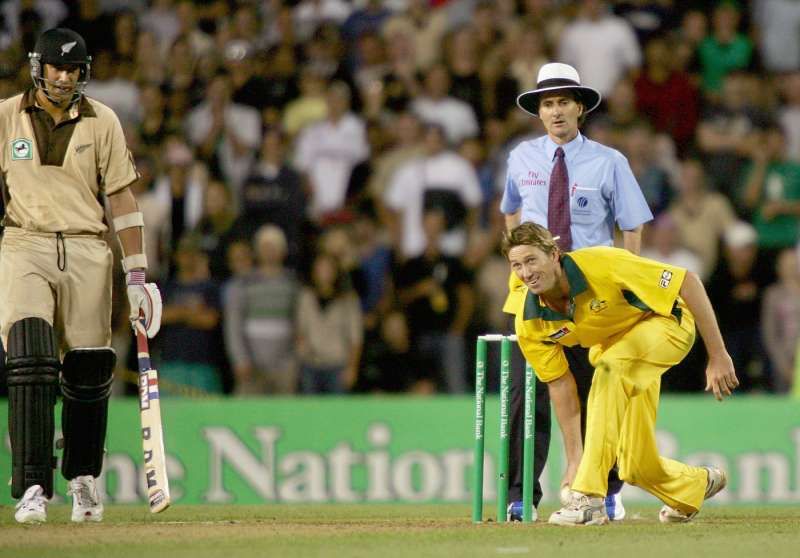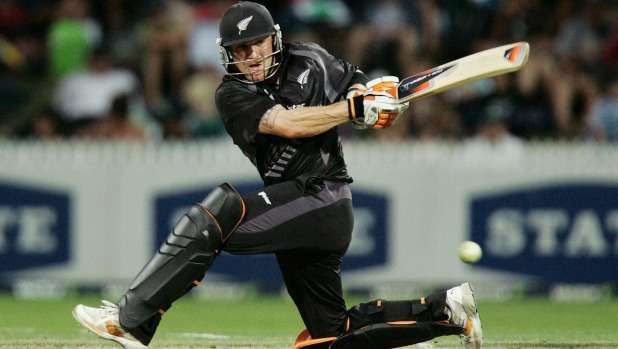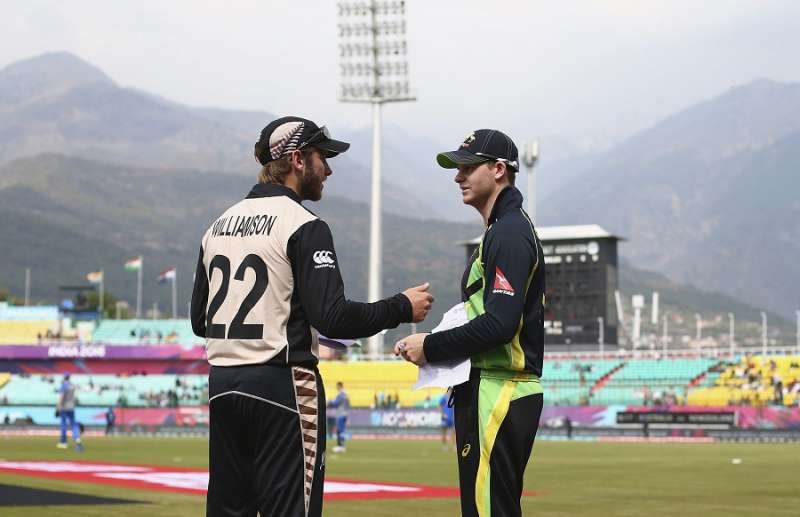
Chappell-Hadlee Series: The underdog in the legion of rivalries
The Australian summer, it must be said, has been robbed off its charm this season. While the featherbeds at the WACA and the MCG had helped Usman Khawaja and Joe Burns create a flat-bat uprising last season, only one of them finds himself in the Test team this time around.
The Proteas, who seem to be on a mission to restore their lost prestige – while the Aussies still fret over the popularity of Faf du Plessis' chewing gum – have already inflicted a deadening wound to the men down under, so much that changes have been ushered in right from the top (read the selection panel) to the bottom (read literally the bottom of the line-up).
Their limited-overs fortunes saw a similar decline when a Mitchell Starc-less Australia stumbled and stuttered to their first whitewash in a five-match ODI series in South Africa. When you add to that the theatrics created by the occasional ‘big show' Glenn Maxwell, you realise that the dominating aura that once surrounded the nation had only slipped into obscurity.
New Zealand, on the other hand, may not be much better off, but they at least have their team and their players in unison (or at least what remains of them). The absence of Corey Anderson, Ross Taylor, Adam Milne and Ish Sodhi has poked a considerable hole in their reserves as well. On a positive note, the Kiwis can take pride in the fact that they pushed a full-strength Indian side to their limits during their last limited-overs assignment.
Hence, sandwiched between the day-night Test bravado and the traditional boxing day, lost somewhere between the hurting defeats in five consecutive Tests and the four that wait in the subcontinent, Australia take on their trans-Tasman rivals in an ODI series that has been all about prestige, and very little about popularity.
Historical background
That it hasn't been about popularity – with Trevor Chappell being the only person being remembered when one thinks about the Australia-New Zealand rivalry – has taken its toll on the tradition as well. While it has been named after two of the greatest cricketing families across the seas – the Chappells (Ian, Greg and Trevor) and the Hadlees (Father Walter, and his three sons – Dayle, Barry and Richard) the tournament has lost its charm over the past five years or so.
Played for the first time in the 2004-05 season, the tournament was held regularly every year for next six seasons before being paused in an untimely manner after the conclusion of the 2011 World Cup. The fact that on two occasions the series was organised as a one-off match, which was the league stage game between the two nations in the 2011 and 2015 World Cup, speaks in abundance about the lack of attention that the series has received.
One contributing factor to the ‘no popularity’ feature of the league is the absence of Test matches. While it is the limited-overs contests that bring the crowds to the arena, the underlying truth (read hypocrisy if you please) is the fact that tradition and ferocity is only associated with the likes of the Ashes and the Border-Gavaskar wherein players battle it out in the whites.
Season | Host Nation | Winner | Margin |
|---|---|---|---|
2004-05 | Australia | Drawn | 1-1 (3) |
2005-06 | New Zealand | Australia | 2-1 (3) |
2006-07 | New Zealand | New Zealand | 3-0 (3) |
2007-08 | Australia | Australia | 2-0 (3) |
2008-09 | Australia | Drawn | 2-2 (5) |
2009-10 | New Zealand | Australia | 3-2 (5) |
2010-11 | India (2011 World Cup) | Australia | 1-0 (1) |
2014-15 | Australia (2015 World Cup) | New Zealand | 1-0 (1) |
2015-16 | New Zealand | New Zealand | 2-1 (3) |
Memorable encounters
The absence of the tournament from 2010-11 to 2014-15 must not be attributed to the death of the rivalry. It can be, however, attributed to the death of the intent to keep the rivalry intact. Now that the series is about to be organised for the first time in Australia since 2008-09, a look back at some of the most memorable Chappell-Hadlee encounters of the past must make for a good reminisce.
One of the most noticeable tournaments to be looked back upon was the 2006-07 series, wherein Australia, the dominant force that they were back then, were whitewashed for the first time in the history of the tournament.
Led by Michael Hussey, standing-in for regular skipper Ricky Ponting, Australia made a comeback to the series after losing the first ODI by 10 wickets with a score of 336/4 in the 2nd ODI. However, Ross Taylor's century and fifties by Craig McMillan and Peter Fulton helped the Kiwis hunt the target down in 48.4 overs with 5 wickets in hand.
In the final, the Aussies went one step ahead and posted an even bigger total of 346/5 courtesy a magnificent 181 by Matthew Hayden at the top of the order. However, as dominant as the Australians might have been back then (and they went on to prove it by winning the 2007 World Cup in the West Indies that immediately succeeded this series), they were in for a massive shock just before the World Cup. McMillan (117) along with the then relatively-modest Brendon McCullum (86*) rescued the Kiwis from 116/5 and took them beyond the line with just three balls to spare and one wicket in hand.
The consequences of such an overwhelming turn around had to be seen. Australia were dethroned from their No. 1 position in the ICC ODI Rankings for the first time since they were introduced in 2002, thereby ending a 52-week-long streak at the top.
This series was not only the first time that Australia were whitewashed in the history of the Chappell-Hadlee series, but it was also the first time in their ODI history that they lost a match by 10 wickets. Craig McMillan scored the fastest ever hundred by a New Zealander in the third ODI when he reached his hundred off just 67 balls and this record stood until 2014 when Corey Anderson hit a 36-ball ton to not only take the New Zealand record but the world record as well along with it.
What lies ahead
A repeat of such a record-shattering tournament looks bleak for the moment, for both teams look to be under transition, and are trying to re-build their line-ups. However, with some exciting young legs and two relatively young captains, the probability of a fiercely-contested series cannot be negated.
While Australia have included the uncapped Western Australia all-rounder Hilton Cartwright in their squad, New Zealand have a rookie fast bowler Lockie Ferguson as their answer. They also have Todd Astle, the leg spinner, and Colin de Grandhomme, the find of the Test series against Pakistan as some of the new faces.
If the Chappell-Hadlee series 2016-17 that begins this Sunday lives up to its expectations, not only will the prestige of the rivalry be maintained, it will also gain a considerable chunk in terms of popularity, for the game in coloured clothing has never been this popular, and its reach has never been this wide.
The Squads
Australia – Steven Smith (C), David Warner, Aaron Finch, George Bailey, Travis Head, Glenn Maxwell, Mitchell Marsh, Hilton Cartwright, Matthew Wade (WK), James Faulkner, Mitchell Starc, Pat Cummins, Josh Hazlewood, Adam Zampa.
New Zealand – Kane Williamson (C), Todd Astle, Trent Boult, Lockie Ferguson, Martin Guptill, Colin de Grandhomme, Matt Henry, Tom Latham, Colin Munro, Jimmy Neesham, Henry Nicholls, Mitchell Santner, Tim Southee, BJ Watling.
The schedule
1st ODI – December 4, Sydney Cricket Ground, Sydney.
2nd ODI – December 6, Manuka Oval, Canberra.
3rd ODI – December 9, Melbourne Cricket Ground, Melbourne.
Follow your cricket stars and what they are up to in the latest cricket news and analysis at Sportskeeda Cricket.



